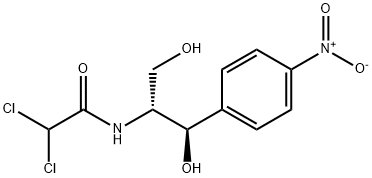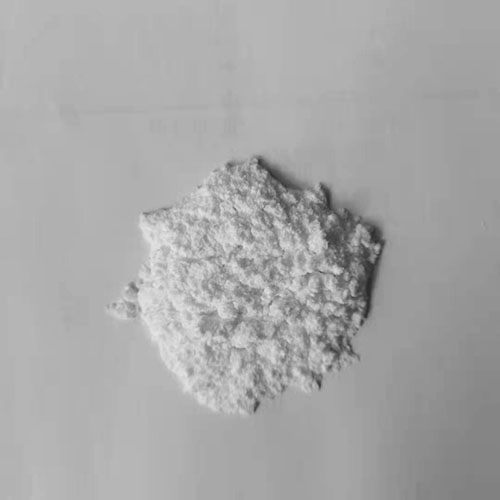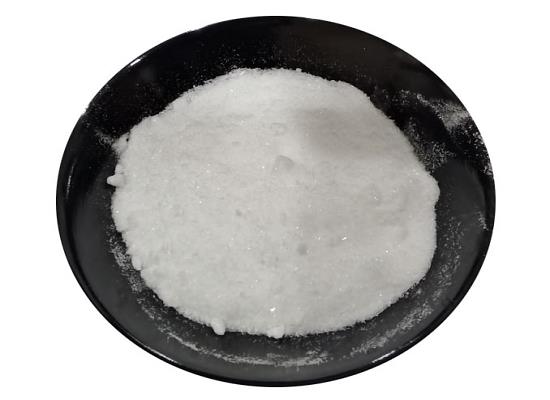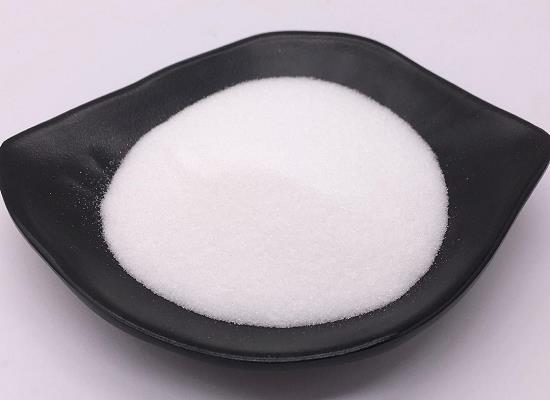Chloramphenicol: Chemistry, Mechanism of Action and Pharmacokinetics
General Description
Chloramphenicol, a synthetic broad-spectrum antibiotic derived from Streptomyces venezuelae, inhibits bacterial protein synthesis by binding reversibly to the 50S subunit of the ribosome. Its bacteriostatic action extends to a wide range of bacteria, making it valuable for treating diverse infections. Pharmacokinetically, oral chloramphenicol palmitate exhibits high bioavailability through intestinal hydrolysis, while intravenous formulations offer rapid systemic delivery. Metabolized in the liver and excreted by the kidneys, chloramphenicol requires vigilant monitoring, especially in hepatic impairment cases. Its distribution into body fluids enhances therapeutic reach, necessitating maintenance of serum levels at 15 to 30 mcg/mL for optimal efficacy and safety, alongside careful drug interaction monitoring.

Figure 1. Chloramphenicol
Chemistry
Chloramphenicol is a broad-spectrum antibiotic that was originally isolated from the soil organism Streptomyces venezuelae. It is notable for being one of the first antibiotics to be manufactured synthetically on a large scale. Chloramphenicol is available in various forms, including oral capsules and injectable solutions. In the United States, the parenteral form, chloromycetin sodium succinate, continues to be available, albeit in limited quantities. The oral form, chloromycetin palmitate, while no longer produced in the U.S., remains accessible in other parts of the world. This accessibility underscores the continued relevance of chloramphenicol in global healthcare, particularly in areas where newer antibiotics might not be available or affordable. 1
Mechanism of Action
Chloramphenicol exerts its antimicrobial effects by inhibiting protein synthesis in bacteria. It achieves this by competing with messenger RNA for the binding sites on the bacterial ribosome necessary for peptide bond formation. Specifically, chloramphenicol binds reversibly to the 50S subunit of the 70S ribosome, effectively blocking the attachment of the amino acid end of the aminoacyl-tRNA to its binding site. This action inhibits peptidyl transferase, a critical enzyme in the synthesis process. While primarily bacteriostatic, chloramphenicol can be bactericidal against pathogens causing meningitis such as H. influenzae, S. pneumoniae, and N. meningitidis. The effectiveness of chloramphenicol across a wide spectrum of bacteria, including gram-positive and gram-negative bacteria, anaerobes, spirochetes, rickettsia, chlamydiae, and mycoplasma, highlights its importance in treating various infections. 1
Pharmacokinetics
Absorption and Bioavailability
Chloramphenicol is available in various formulations that exhibit different pharmacokinetic profiles. The oral formulations of chloramphenicol, particularly chloramphenicol palmitate, are well-absorbed through the gastrointestinal tract. This formulation is hydrolyzed in the intestine to release active chloramphenicol, leading to high bioavailability and often surpassing the peak serum levels achieved by parenteral administration. In contrast, intravenous chloramphenicol, such as chloramphenicol sodium succinate, can result in lower serum concentrations, primarily due to incomplete hydrolysis. Despite this, it remains a vital option for systemic treatment, offering rapid and effective delivery of chloramphenicol, particularly when oral administration is not feasible.
Metabolism and Interaction
Chloramphenicol is primarily metabolized in the liver, making it crucial to consider hepatic function when administering this medication. The drug is excreted through the kidneys, and variations in metabolism require that serum levels be regularly monitored, especially in populations vulnerable to hepatic impairments. Adjustments in dosage are necessary for patients with liver problems to avoid adverse effects such as bone marrow suppression. Moreover, chloramphenicol's interaction with hepatic enzyme inducers, such as rifampin and phenobarbital, can alter its levels significantly. These interactions underscore the importance of careful monitoring of chloramphenicol levels in patients undergoing treatment with other medications that might induce or inhibit its metabolism.
Tissue Distribution and Monitoring Requirements
The therapeutic efficacy of chloramphenicol is enhanced by its broad distribution into various body fluids, including cerebrospinal, pleural, ascitic, and synovial fluids. This wide distribution is crucial for treating infections in these diverse and often hard-to-reach environments. To ensure both efficacy and safety, it is recommended to maintain serum concentrations of chloramphenicol between 15 to 30 mcg/mL. Regular monitoring of these levels is essential, particularly after administration and when used concurrently with other drugs. Such vigilant monitoring helps in optimizing the therapeutic benefits of chloramphenicol while minimizing potential toxicity, thus maintaining a balance between effectiveness and safety. 2
Reference
1. Manisha G. Chloramphenicol: Structure and Mechanism of Action | Antibiotics. Biology Discussion.
2. Balbi HJ. Chloramphenicol: a review. Pediatr Rev. 2004; 25(8): 284-288.
);Related articles And Qustion
Lastest Price from Chloramphenicol manufacturers

US $100.00-70.00/kg2024-09-19
- CAS:
- 56-75-7
- Min. Order:
- 1kg
- Purity:
- 99%
- Supply Ability:
- 5000

US $100.00-40.00/KG2024-09-19
- CAS:
- 56-75-7
- Min. Order:
- 10KG
- Purity:
- 99%
- Supply Ability:
- 100000kg




